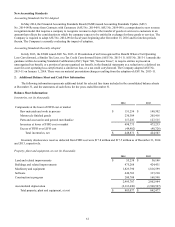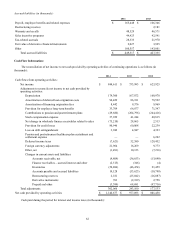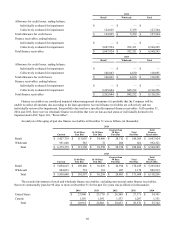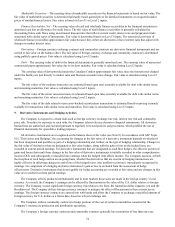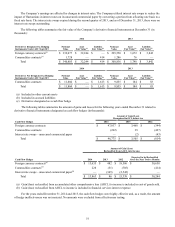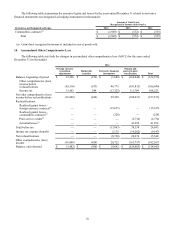Harley Davidson 2014 Annual Report Download - page 69
Download and view the complete annual report
Please find page 69 of the 2014 Harley Davidson annual report below. You can navigate through the pages in the report by either clicking on the pages listed below, or by using the keyword search tool below to find specific information within the annual report.
A significant part of managing the Company's finance receivable portfolios includes the assessment of credit risk
associated with each borrower. As the credit risk varies between the retail and wholesale portfolios, the Company utilizes
different credit risk indicators for each portfolio.
The Company manages retail credit risk through its credit approval policy and ongoing collection efforts. The Company
uses FICO scores, a standard credit rating measurement, to differentiate the expected default rates of retail credit applicants
enabling the Company to better evaluate credit applicants for approval and to tailor pricing according to this assessment. Retail
loans with a FICO score of 640 or above at origination are considered prime, and loans with a FICO score below 640 are
considered sub-prime. These credit quality indicators are determined at the time of loan origination and are not updated
subsequent to the loan origination date.
The recorded investment of retail finance receivables, by credit quality indicator, at December€31 was as follows (in
thousands):€
2014 2013
Prime $4,435,352 $4,141,559
Sub-prime 1,172,572 1,123,485
Total $5,607,924 $5,265,044
The Company's credit risk on the wholesale portfolio is different from that of the retail portfolio. Whereas the retail
portfolio represents a relatively homogeneous pool of retail finance receivables that exhibit more consistent loss patterns, the
wholesale portfolio exposures are less consistent. The Company utilizes an internal credit risk rating system to manage credit
risk exposure consistently across wholesale borrowers and individually evaluates credit risk factors for each borrower. The
Company uses the following internal credit quality indicators, based on an internal risk rating system, listed from highest level
of risk to lowest level of risk, for the wholesale portfolio: Doubtful, Substandard, Special Mention, Medium Risk and Low
Risk. Based upon management’s review, the dealers classified in the Doubtful category are the dealers with the greatest
likelihood of being charged-off, while the dealers classified as Low Risk are least likely to be charged-off. The internal rating
system considers factors such as the specific borrower's ability to repay and the estimated value of any collateral. Dealer risk
rating classifications are reviewed and updated on a quarterly basis.
The recorded investment of wholesale finance receivables, by internal credit quality indicator, at December€31 was as
follows (in thousands):€
2014 2013
Doubtful $954 $—
Substandard 7,025 8,383
Special Mention — 2,076
Medium Risk 11,557 5,205
Low Risk 932,785 829,548
Total $952,321 $845,212
69
6.€€€€Asset-Backed Financing
The Company participates in asset-backed financing through both term asset-backed securitization transactions and
through asset-backed commercial paper conduit facilities. The Company treats these transactions as secured borrowings
because assets are either transferred to consolidated VIEs or the Company maintains effective control over the assets and does
not meet the accounting sale requirements under ASC Topic 860. See Note 1 for more information on the Company's
accounting for asset-backed financings and VIEs.




